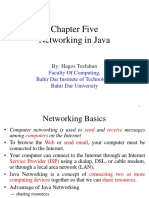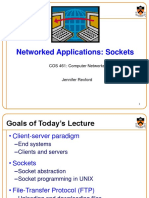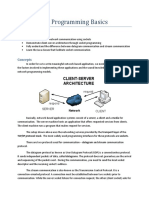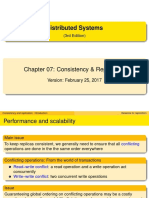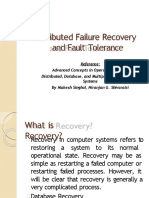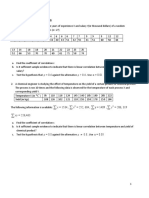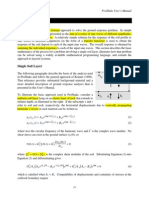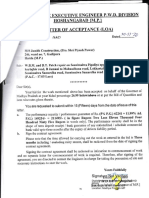0% found this document useful (0 votes)
391 views45 pagesIntroduction and Socket PPT 2 - PDF
Distributed algorithms are used in distributed computing systems to solve problems across networked computers. A distributed system is a network of processes that communicate through message passing. The topology of a distributed system can be represented as a graph where nodes are processes and edges are communication channels. Distributed algorithms are useful for solving graph theoretic problems in distributed systems and have applications in areas like social networks, sensor networks, and computational grids.
Uploaded by
Richa SinghCopyright
© © All Rights Reserved
We take content rights seriously. If you suspect this is your content, claim it here.
Available Formats
Download as PDF, TXT or read online on Scribd
0% found this document useful (0 votes)
391 views45 pagesIntroduction and Socket PPT 2 - PDF
Distributed algorithms are used in distributed computing systems to solve problems across networked computers. A distributed system is a network of processes that communicate through message passing. The topology of a distributed system can be represented as a graph where nodes are processes and edges are communication channels. Distributed algorithms are useful for solving graph theoretic problems in distributed systems and have applications in areas like social networks, sensor networks, and computational grids.
Uploaded by
Richa SinghCopyright
© © All Rights Reserved
We take content rights seriously. If you suspect this is your content, claim it here.
Available Formats
Download as PDF, TXT or read online on Scribd
/ 45























